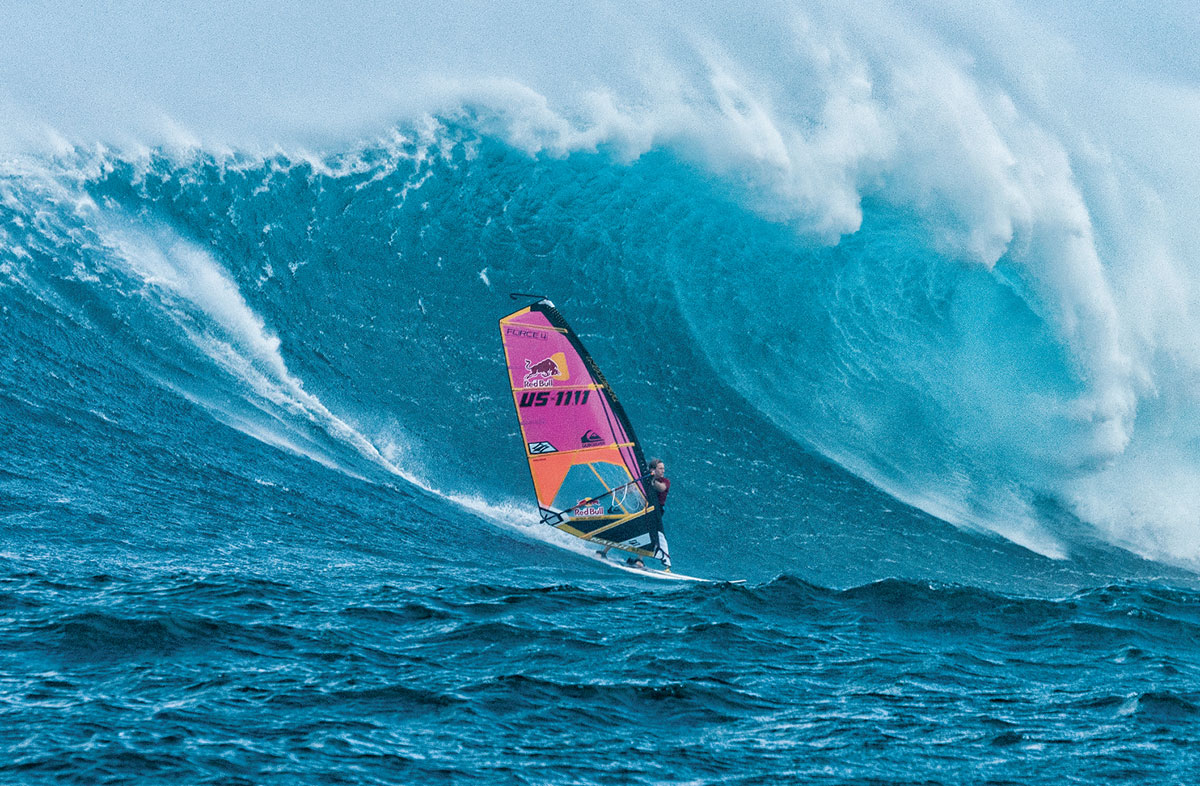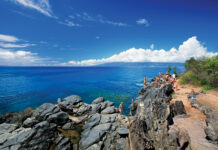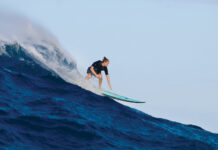
Anyone who has been competitive in sports knows the innate yet inexplicable human need to push your limits and attempt the impossible. For surfers, that impossible was Jaws.
“There was talk amongst big wave surfers that there was this thing called the unrideable realm,” says Cabrinha, “this threshold where it was generally understood that there existed a size of wave you might not be able to catch by paddling in.”
“The first time I went out to Jaws was in 1996. I launched from the lighthouse with a friend of mine — no boat, no Jet Ski, no helicopter. I made it out past the break, but he didn’t; he kind of got washed back in. So I had my first session at Jaws by myself.” — Robby Naish
Simply defining this realm made people crazy to conquer it, including Laird Hamilton, who at the time was making a name for himself on Oahu. Laird and a couple friends were noodling around and towing one another into waves using a Zodiac — an inflatable boat traditionally used for leisurely activities such as fishing. They documented their efforts of that session and brought their footage to Maui where they shared it with friends. Immediately everyone wanted a piece of the action. They upgraded their towing tools from Zodiacs to Jet Skis and used themselves as guinea pigs for any and all equipment innovations they could dream up.
“We quickly realized that in order to [tow-surf] effectively we needed to be connected to the board,” says Cabrinha. “Originally we tried foil boarding with a semi-permanent connection using snowboard boots. But that was pretty gnarly because you’d go from like 50 miles an hour to zero in half a second. So we started strapping ourselves to our surfboards like you do in windsurfing.”
And so was born the Strapped Crew which included Laird Hamilton, Mark Angulo, Pete Cabrina, Darrick Doerner, Dave Kalama, Brett Lickle, Rush Randle and Mike Waltze, among others.
Once they had a rudimentary system in place, it was just a matter of honing their craft in anticipation of blowing past that unrideable realm. “It was a sobering and serious moment when you realized that, okay, there is gonna be a day where we’re gonna come out to Jaws and we are gonna be able to catch an 80-footer,” says Cabrinha. “I think we all knew that we were part of this, that we were living this seismic shift in the whole big wave surfing thing. We knew there was such consequence to what we were doing, and everybody had everybody’s back. Surfing went from a solo sport to a team sport and we got serious about the surfing as well as the rescuing, because if someone wiped out, you couldn’t go in and pick them out of the impact zone. That’s when the Jet Ski became an important part of the rescue as well as the towing-in.”
The Strapped Crew continued to experiment with equipment, and though they didn’t realize it at the time, were laying the very foundation that would make Maui ground zero for surfing technology.
“Tow surfing pushed the progress of equipment because you could ride a much smaller board — the size of board that matched the wave — and there was this quantum leap in board performance,” says Cabrinha. “Paddling in you’re riding at least a 10½- or 11-foot board, but with tow surfing you’re riding a 6-foot board and suddenly you have a high-performance surfboard on your feet that you can really control.”





